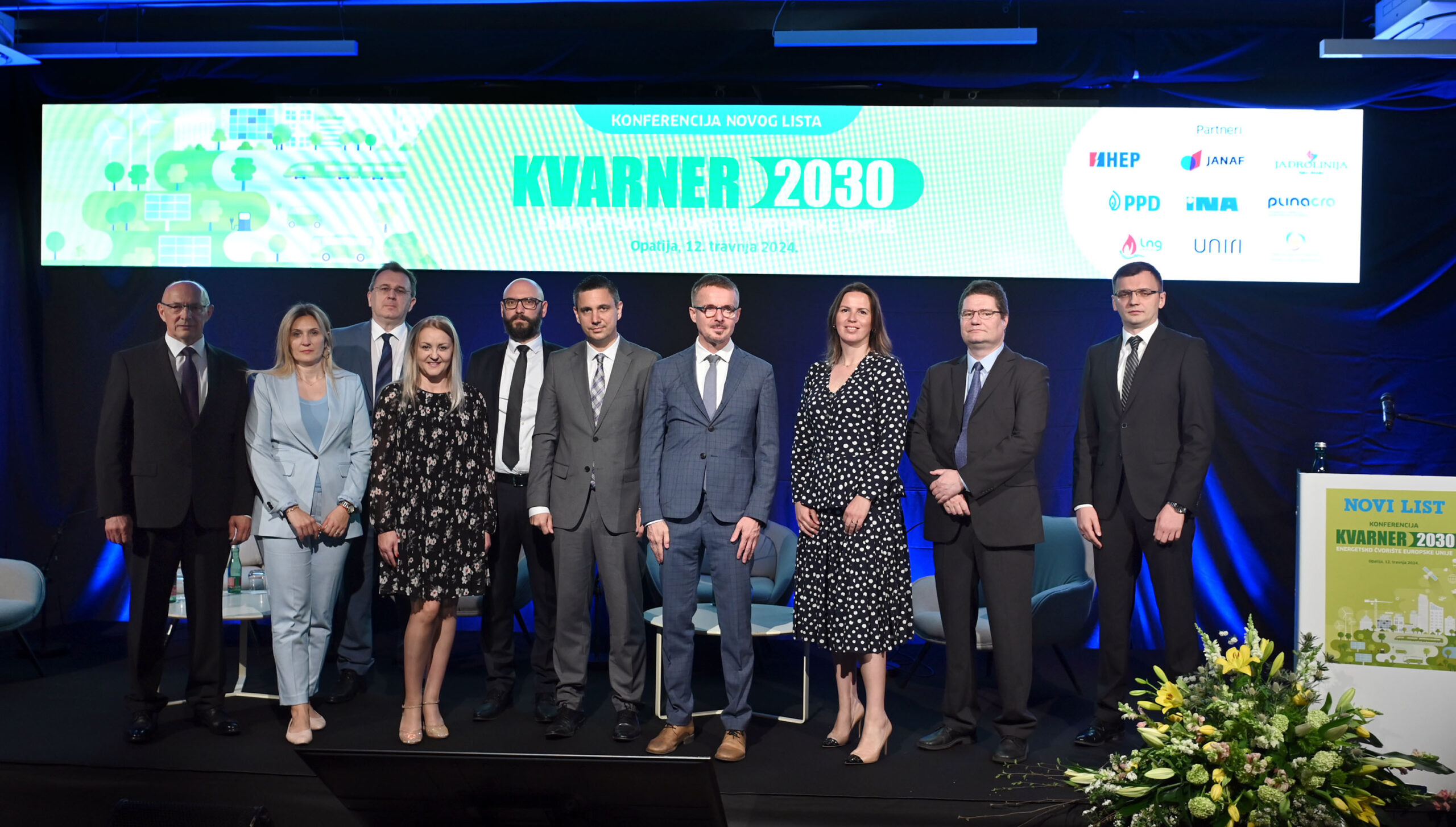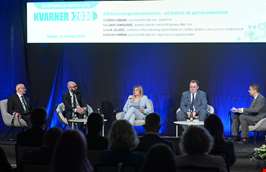12.04.2024.
The conference entitled “KVARNER 2030 - European Union Energy Hub” organised by the daily Novi list gathered experts who in two panels discussed the present and future of Kvarner as an energy hub, whose importance is stretching across the Croatian and regional borders and is growing in the EU.
Geopolitical developments, driven primarily by the war in Ukraine and instability in the Middle East, have brought to the forefront, perhaps more than ever, energy security, stability of supply and the need to ensure as much as possible energy sufficiency from own sources. In her welcome speech, Ankica Kruljac, president of the Board of Novi list, pointed out the role of Kvarner in reaching such goals. "In the past ten years, Rijeka and Kvarner have become a major energy hub thanks to manufacturing and transport of natural gas, diesel and oil. There's also hydrogen, as the fuel of the future," she said.
In the first panel, on the topic of "Sustainable energy future - from fossil fuels to the fuels of the future", Sanja Jelačić, head of Intermediate Body at the Environmental Protection and Energy Efficiency Fund, pointed out that the Fund had been engaged in green transition for years. "While the existing European directives have put the focus on the building sector, the geopolitical situation has accelerated extremely important strategic projects," said Jelačić and pointed out the recently signed contract with Plinacro worth half a billion euros. "To illustrate, the Pelješac Bridge project was worth about 370m euros. Plinacro's project refers to the modernisation of the energy system, which will enable the subsequent use of hydrogen. In addition, there are various other projects with HEP and HOPS, for example the project of decarbonisation of the energy grid connecting the five Adriatic islands worth close to 300 million euros. When we sum up all the projects that just Intermediate Body of the Fund actively follows, we are talking about an investment cycle of 4.5 billion euros and more than three thousand projects", Jelačić underlined, and added that there were also numerous projects in which national funds were used, such as the energy renovation of family houses, for which the Fund received more than 12,000 applications. Apart from Jelačić, other panellists included Stjepan Adanić, chairman of the Board of JANAF, Dalibor Sokolović, head of New and Sustainable Businesses at INA, and Marijan Krpan, president of the Management Board of the Croatian Hydrocarbon Agency.
Marijan Krpan pointed out that the Hydrocarbon Agency invested the most in geothermal energy, and they had startling progress receiving 55 million euros from the NPOO. He announced four wells - in Velika Gorica, Osijek, Vinkovci, Zaprešić, and the idea was that if these wells met the geothermal potential they believed existed, the heating systems of these cities would be connected to them. Krpan believes that the use of geothermal energy is the most efficient alternative to fossil fuels in the Pannonian part of Croatia, while in Kvarner wind farms were also an option. Both INA and Janaf have plans for serious investments in "green" energy sources, said Adanić and Sokolović, mentioning both geothermal sources and hydrogen.
The second panel dealt with the topic of the future of natural gas as a fuel and the transition to hydrogen, and it was attended by advisor to the PPD Management Board Zvonimir Šibalić, assistant member of the Board of Plinacro Robert Bošnjak, director of the Commercial and Financial Affairs Sector of LNG Croatia Danijela Šimović, and dean of the Faculty of Engineering in Rijeka Lado Kranjčević.









